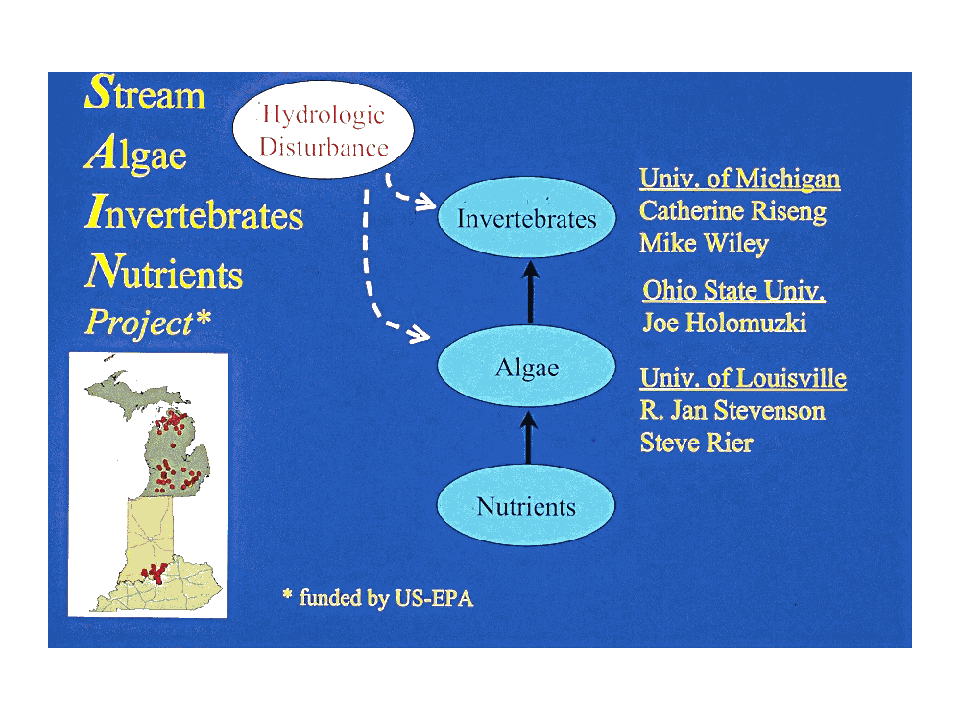
|
[Stream ALGAE +INVERTEBRATE-+NUTRIENT] Official title: Nutrient effects on the organization of stream algal and invertebrate communities This project was one of a
small number of proposals funded under the first joint solicitation of
the EPA/NSF Watershed Initiative. It employs both laboratory experiments,
and large-scale surveys in several ecoregions, to address basic issues
in the ecology of the lower trophic levels of stream ecosystems. Specifically,
this research examines the structural response of algal and invertebrate
communities to site level variations in nutrient availability and disturbance
regime. Key questions being addressed include (1) Are responses to nutrients
in the organization structure of lower trophic levels more or less continuous,
or are there thresholds where small changes result in large structural
responses in the lower trophic levels? (2) how and why do algal communities
escape the control of grazing macroinvertebrates? (3) Are there levels
of nutrient loading, or of hydrologic disturbance, which will guarantee
algal escape?
|
||